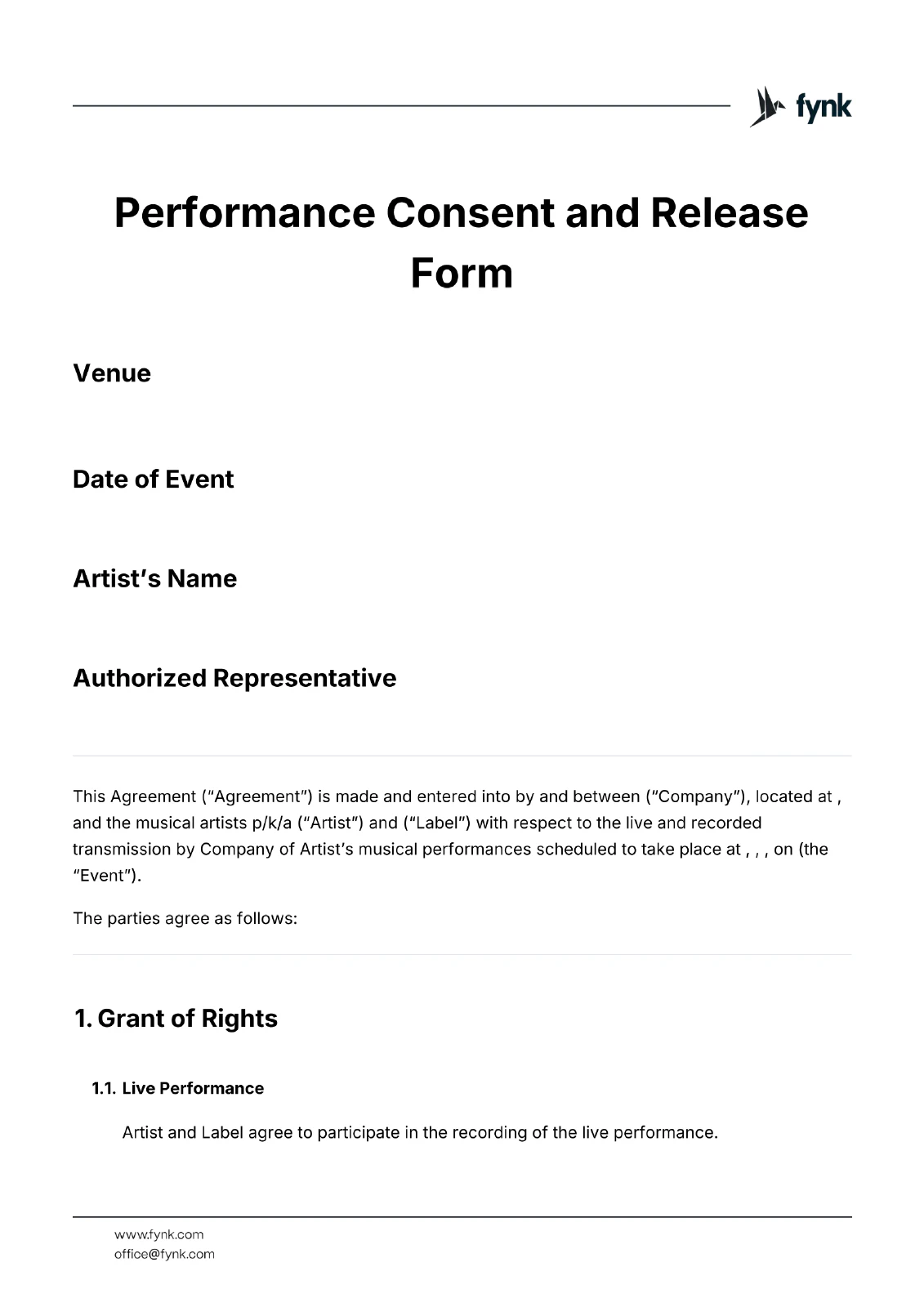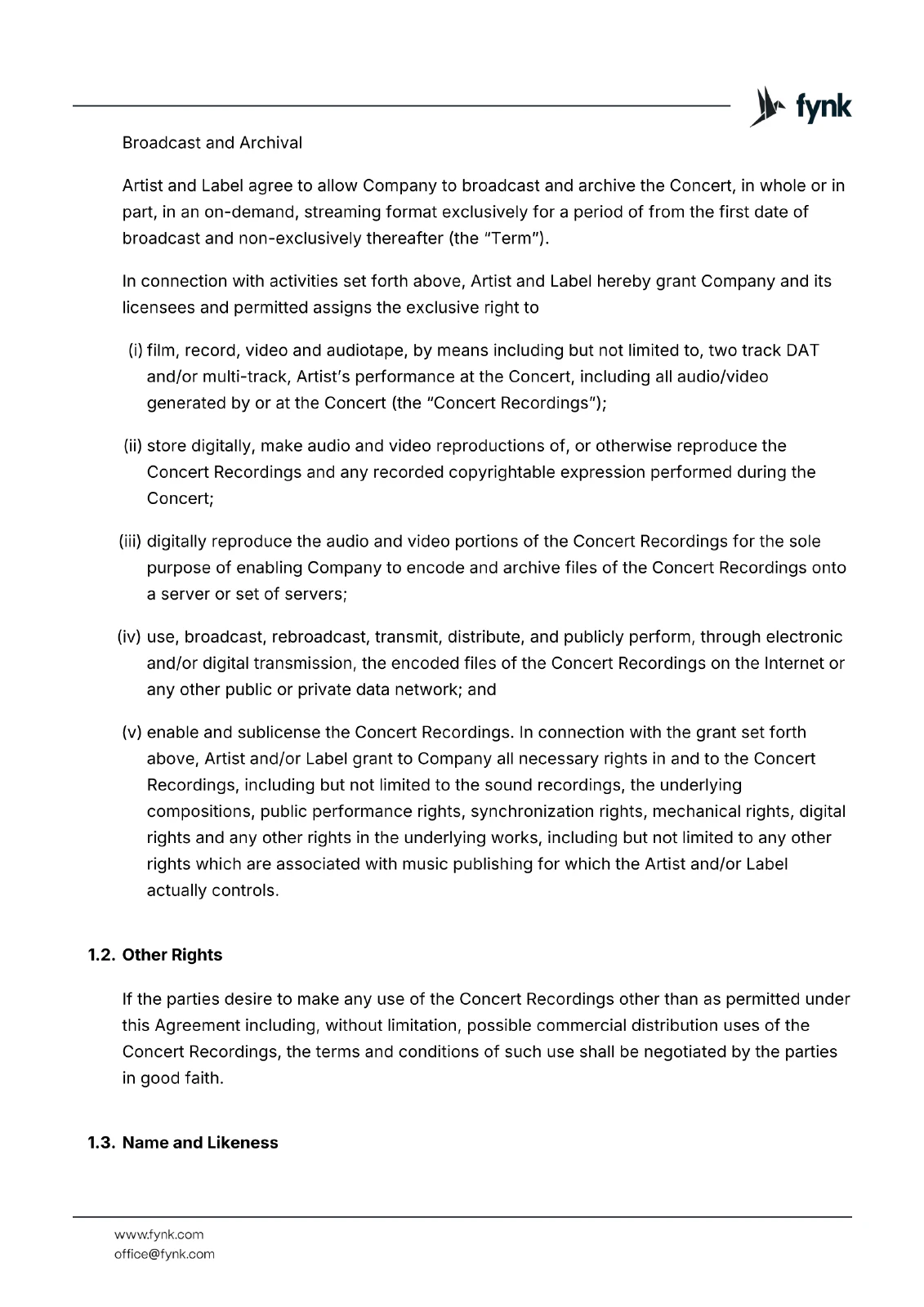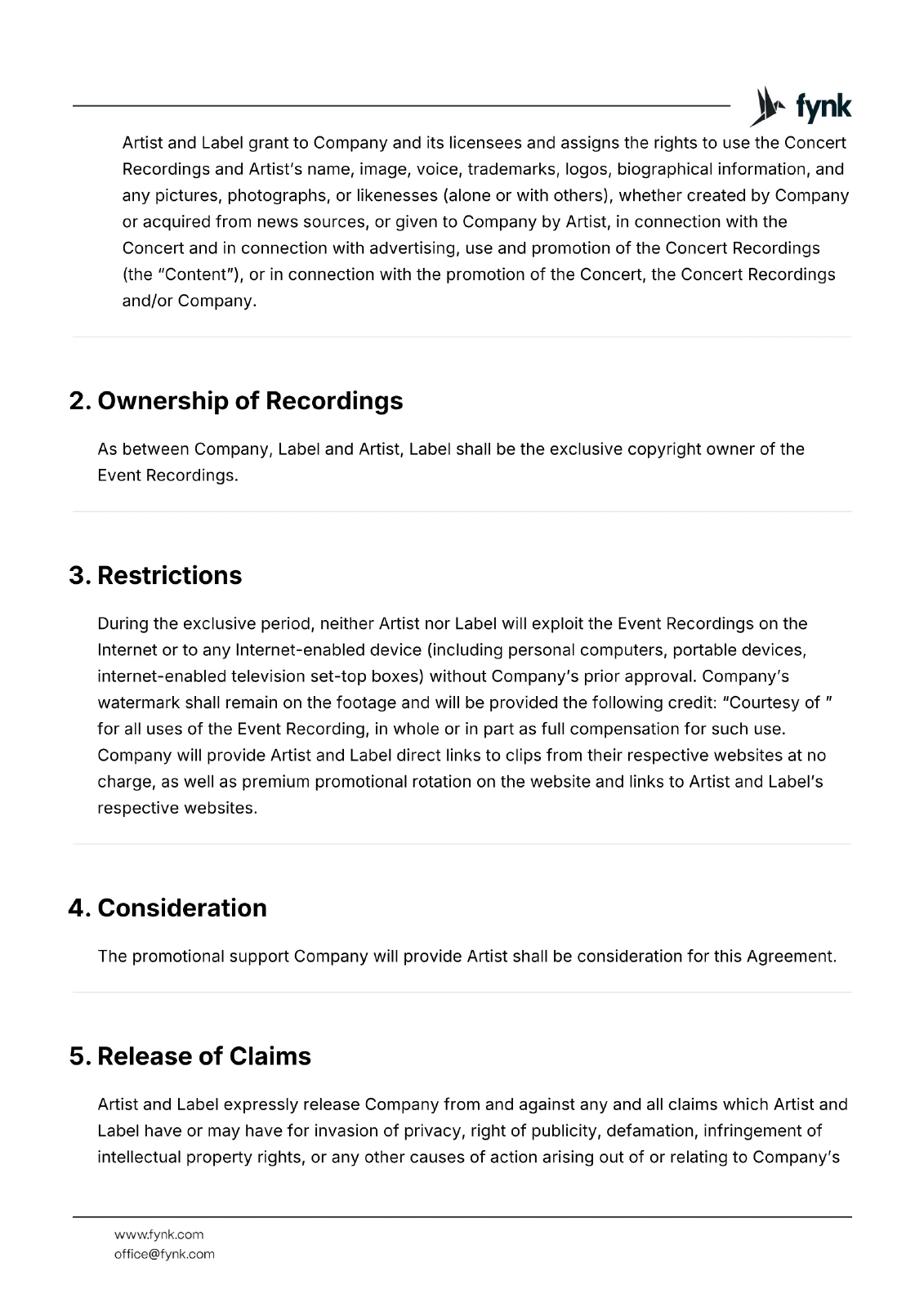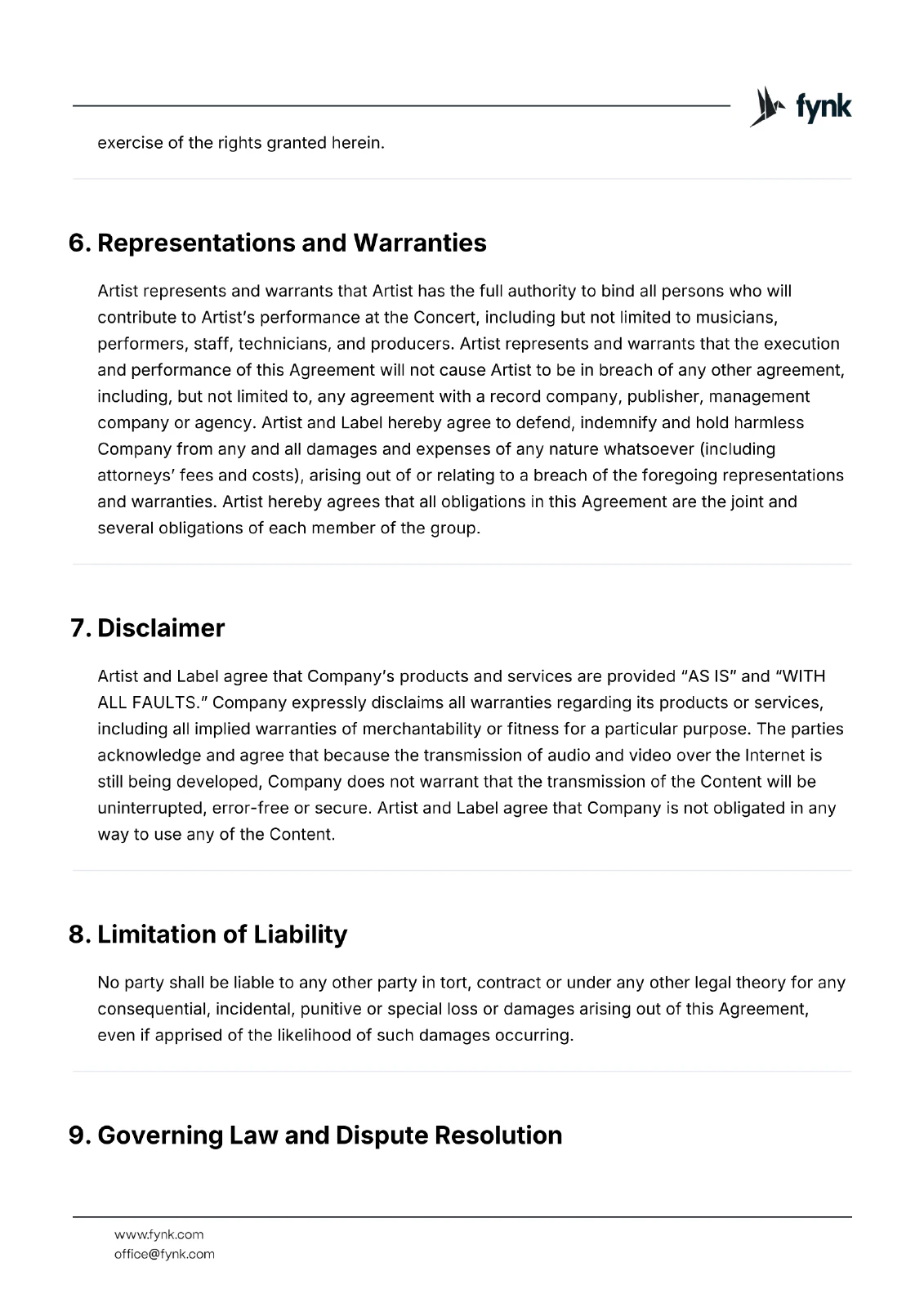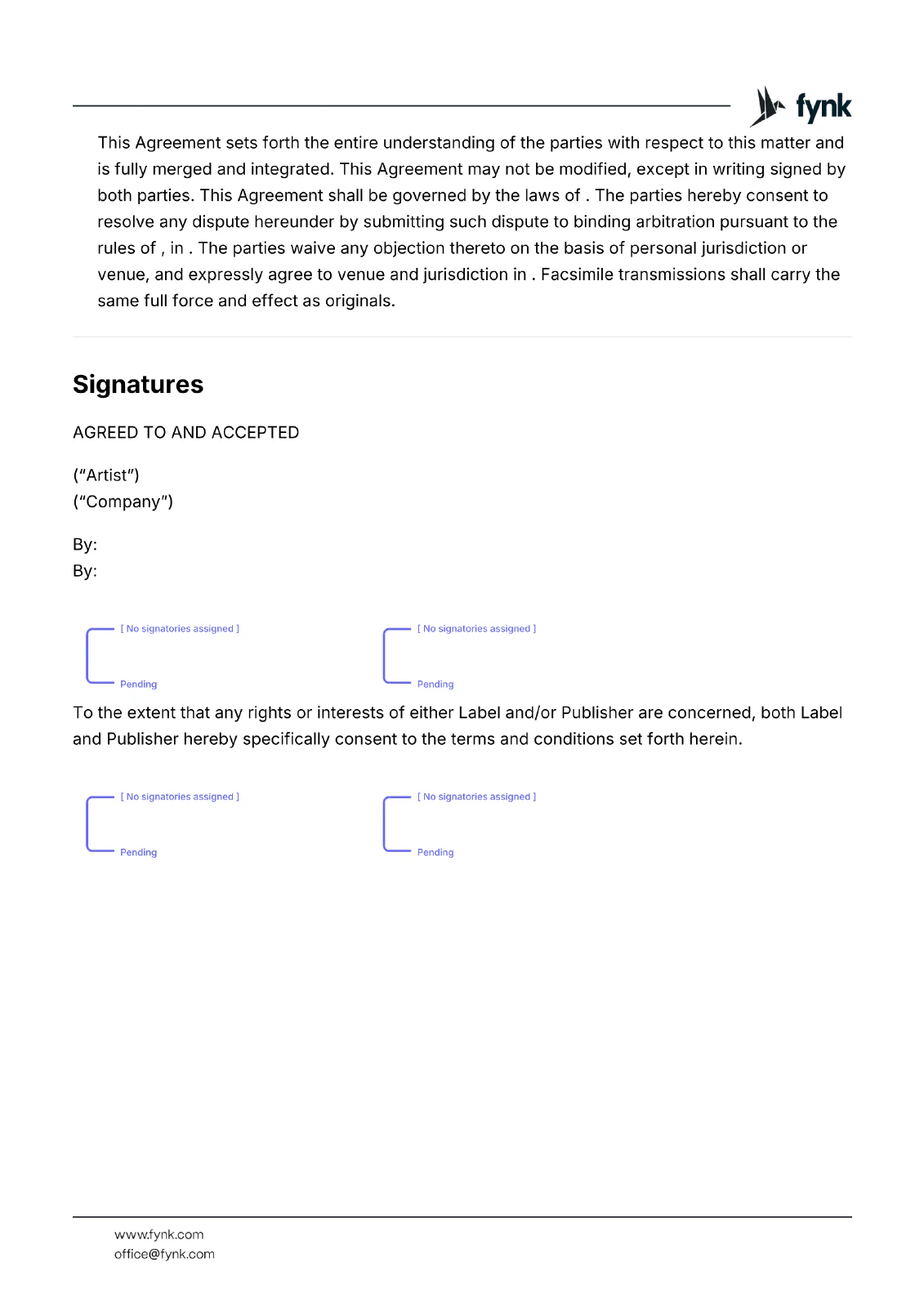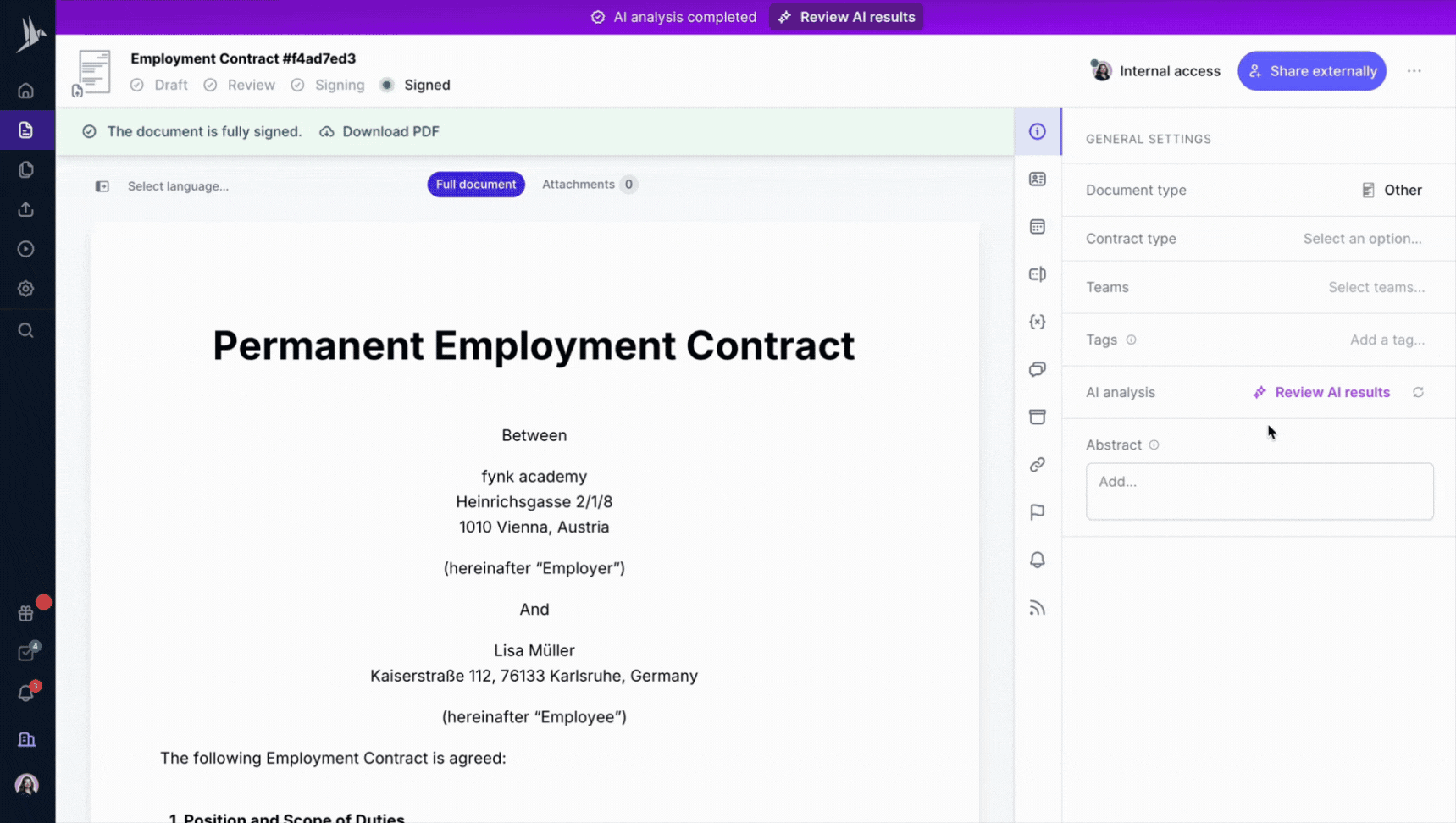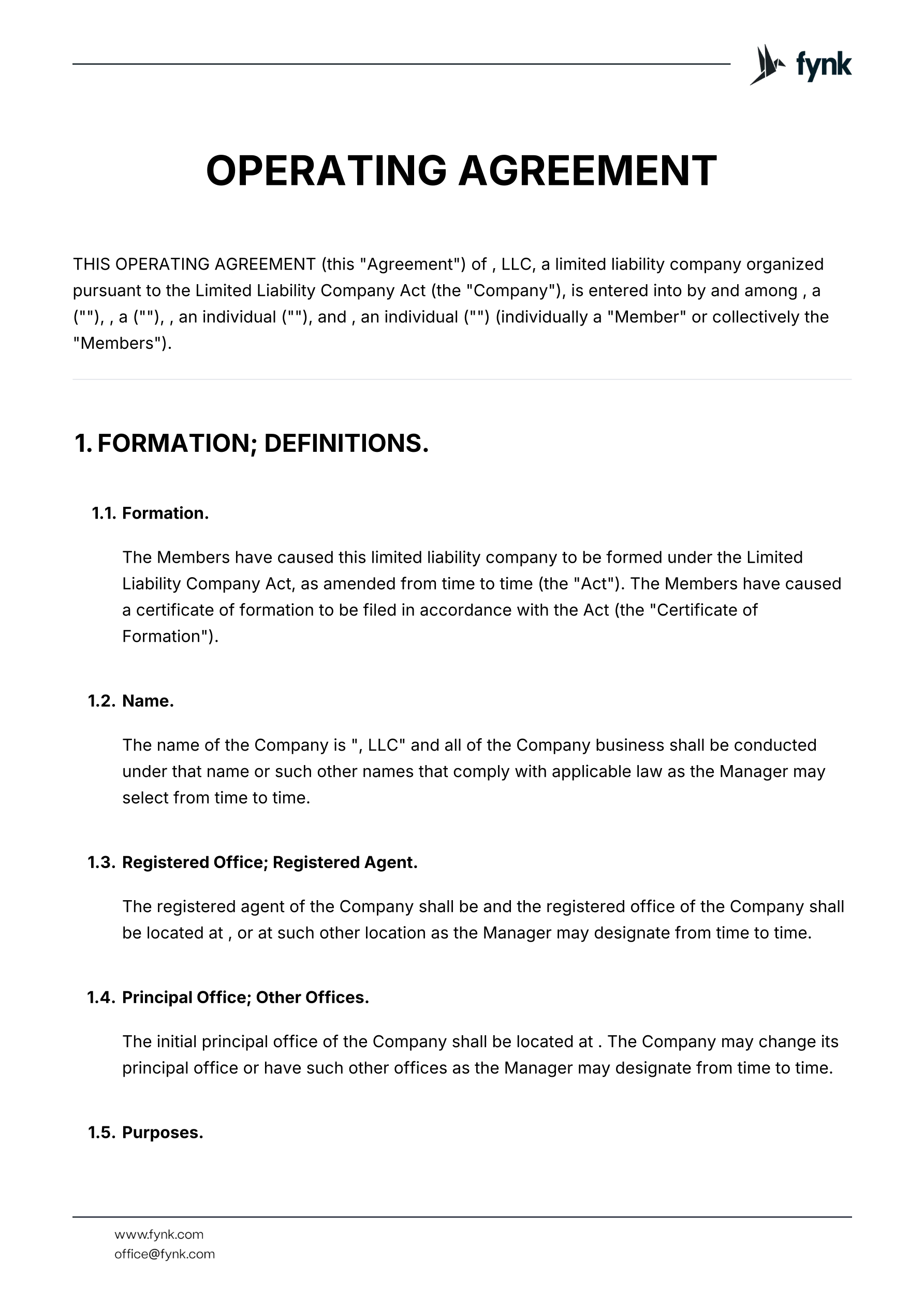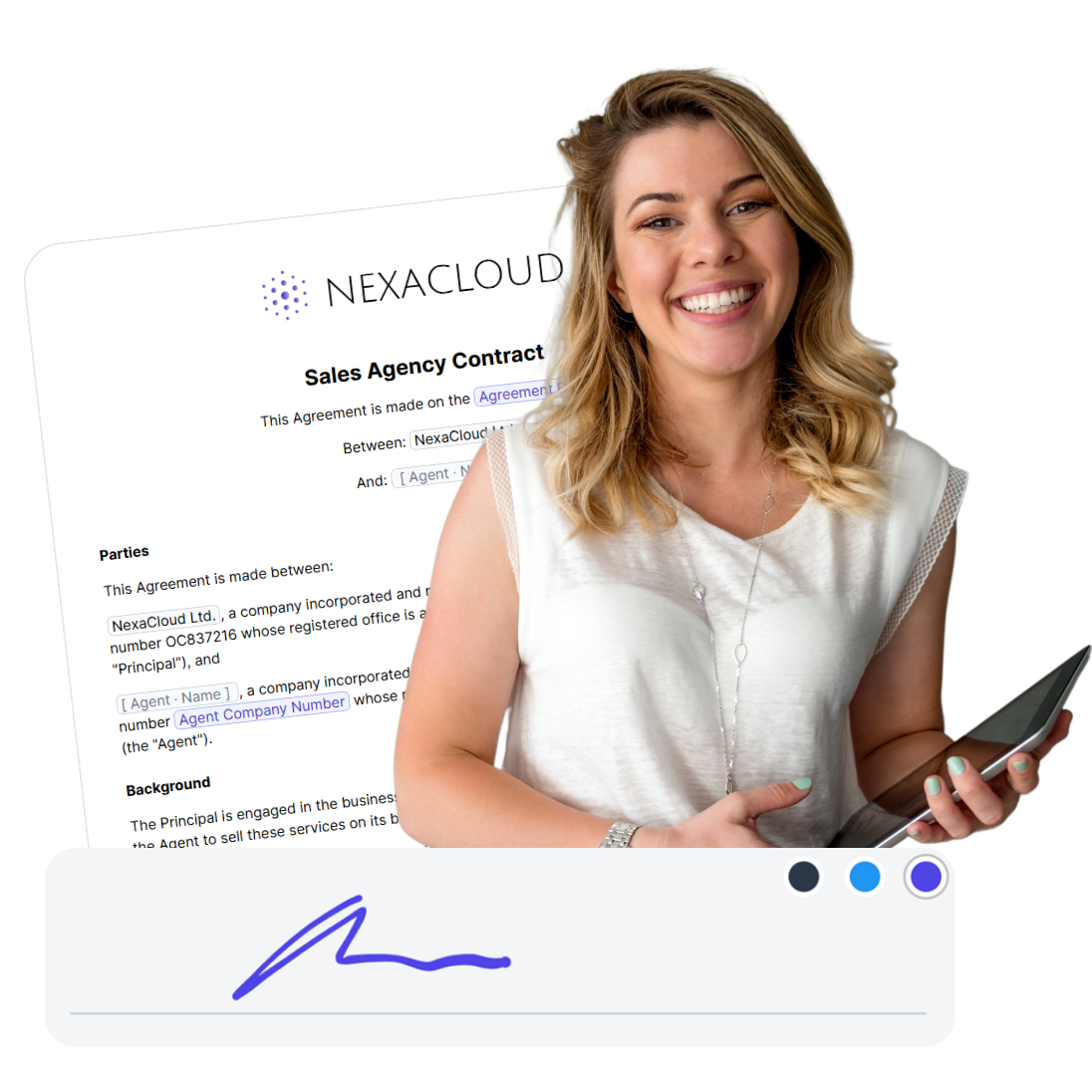Performance Consent and Release Form
Venue
Date of Event
Artist’s Name
Authorized Representative
This Agreement (“Agreement”) is made and entered into by and between (“Company”), located at , and the musical artists p/k/a (“Artist”) and (“Label”) with respect to the live and recorded transmission by Company of Artist’s musical performances scheduled to take place at , , , on (the “Event”).
The parties agree as follows:
Grant of Rights
Live Performance
Artist and Label agree to participate in the recording of the live performance.
Broadcast and Archival
Artist and Label agree to allow Company to broadcast and archive the Concert, in whole or in part, in an on-demand, streaming format exclusively for a period of from the first date of broadcast and non-exclusively thereafter (the “Term”).
In connection with activities set forth above, Artist and Label hereby grant Company and its licensees and permitted assigns the exclusive right to
film, record, video and audiotape, by means including but not limited to, two track DAT and/or multi-track, Artist’s performance at the Concert, including all audio/video generated by or at the Concert (the “Concert Recordings”);
store digitally, make audio and video reproductions of, or otherwise reproduce the Concert Recordings and any recorded copyrightable expression performed during the Concert;
digitally reproduce the audio and video portions of the Concert Recordings for the sole purpose of enabling Company to encode and archive files of the Concert Recordings onto a server or set of servers;
use, broadcast, rebroadcast, transmit, distribute, and publicly perform, through electronic and/or digital transmission, the encoded files of the Concert Recordings on the Internet or any other public or private data network; and
enable and sublicense the Concert Recordings. In connection with the grant set forth above, Artist and/or Label grant to Company all necessary rights in and to the Concert Recordings, including but not limited to the sound recordings, the underlying compositions, public performance rights, synchronization rights, mechanical rights, digital rights and any other rights in the underlying works, including but not limited to any other rights which are associated with music publishing for which the Artist and/or Label actually controls.
Other Rights
If the parties desire to make any use of the Concert Recordings other than as permitted under this Agreement including, without limitation, possible commercial distribution uses of the Concert Recordings, the terms and conditions of such use shall be negotiated by the parties in good faith.
Name and Likeness
Artist and Label grant to Company and its licensees and assigns the rights to use the Concert Recordings and Artist’s name, image, voice, trademarks, logos, biographical information, and any pictures, photographs, or likenesses (alone or with others), whether created by Company or acquired from news sources, or given to Company by Artist, in connection with the Concert and in connection with advertising, use and promotion of the Concert Recordings (the “Content”), or in connection with the promotion of the Concert, the Concert Recordings and/or Company.
Ownership of Recordings
As between Company, Label and Artist, Label shall be the exclusive copyright owner of the Event Recordings.
Restrictions
During the exclusive period, neither Artist nor Label will exploit the Event Recordings on the Internet or to any Internet-enabled device (including personal computers, portable devices, internet-enabled television set-top boxes) without Company’s prior approval. Company’s watermark shall remain on the footage and will be provided the following credit: “Courtesy of ” for all uses of the Event Recording, in whole or in part as full compensation for such use. Company will provide Artist and Label direct links to clips from their respective websites at no charge, as well as premium promotional rotation on the website and links to Artist and Label’s respective websites.
Consideration
The promotional support Company will provide Artist shall be consideration for this Agreement.
Release of Claims
Artist and Label expressly release Company from and against any and all claims which Artist and Label have or may have for invasion of privacy, right of publicity, defamation, infringement of intellectual property rights, or any other causes of action arising out of or relating to Company’s exercise of the rights granted herein.
Representations and Warranties
Artist represents and warrants that Artist has the full authority to bind all persons who will contribute to Artist’s performance at the Concert, including but not limited to musicians, performers, staff, technicians, and producers. Artist represents and warrants that the execution and performance of this Agreement will not cause Artist to be in breach of any other agreement, including, but not limited to, any agreement with a record company, publisher, management company or agency. Artist and Label hereby agree to defend, indemnify and hold harmless Company from any and all damages and expenses of any nature whatsoever (including attorneys’ fees and costs), arising out of or relating to a breach of the foregoing representations and warranties. Artist hereby agrees that all obligations in this Agreement are the joint and several obligations of each member of the group.
Disclaimer
Artist and Label agree that Company’s products and services are provided “AS IS” and “WITH ALL FAULTS.” Company expressly disclaims all warranties regarding its products or services, including all implied warranties of merchantability or fitness for a particular purpose. The parties acknowledge and agree that because the transmission of audio and video over the Internet is still being developed, Company does not warrant that the transmission of the Content will be uninterrupted, error-free or secure. Artist and Label agree that Company is not obligated in any way to use any of the Content.
Limitation of Liability
No party shall be liable to any other party in tort, contract or under any other legal theory for any consequential, incidental, punitive or special loss or damages arising out of this Agreement, even if apprised of the likelihood of such damages occurring.
Governing Law and Dispute Resolution
This Agreement sets forth the entire understanding of the parties with respect to this matter and is fully merged and integrated. This Agreement may not be modified, except in writing signed by both parties. This Agreement shall be governed by the laws of . The parties hereby consent to resolve any dispute hereunder by submitting such dispute to binding arbitration pursuant to the rules of , in . The parties waive any objection thereto on the basis of personal jurisdiction or venue, and expressly agree to venue and jurisdiction in . Facsimile transmissions shall carry the same full force and effect as originals.
Signatures
AGREED TO AND ACCEPTED
(“Artist”)
(“Company”)
By:
By:
To the extent that any rights or interests of either Label and/or Publisher are concerned, both Label and Publisher hereby specifically consent to the terms and conditions set forth herein.

